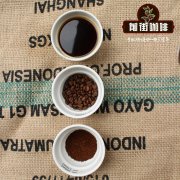Introduction of Pacamara species in El Salvador introduction of Pacamara's characteristic flavor and taste

Professional coffee knowledge exchange more coffee bean information please follow the coffee workshop (Wechat official account cafe_style)
Brief introduction of El Salvador Pacamara Coffee in Qianjie
The Pacamara, bred by El Salvador in the late 1950s, is a hybrid of Pacas and Marago Gippe and is now in high demand. Similar to Maragogippe, it is large-usually twice the size of standard bourbon beans-but produces mediocre yields. Pacamara is widely praised for its clean acidity and fresh scent of flowers, and the higher the altitude, the more advantageous it is to plant it.
So how was Pacamara nurtured?
The Pacamara was developed in 1958 by ISIC, a coffee research institute in El Salvador, and is a mixture of Pacas Pacas and elephant bean Maragogipe.
Pacas is a natural variant of the bourbon variety, which is studied by scientists at the University of Florida. Pacas's tree is small and narrowly spaced, thus developing dense leaves that help combat harsh climatic conditions such as strong winds, sunshine and heavy rain. Not only that, it also has strong disease resistance, is subject to many growth conditions, and the yield is also very high.
Elephant beans are a natural variety of Tibica. Coffee trees like beans are very tall and produce huge fruit seeds. Although the yield is not high, the flavor performance is very good. The inspiration of the Pacamara hybrid is to combine the advantages of the above two varieties and take it from the first half of the English names of Pacas and Elephant beans. The Pacamara took about 30 years of scientific research to develop, and it was not until the late 1980s that it was planted by farmers.
Is there anything special about the flavor of Pacamara?
Pacamara has a complex and strong aroma, medium-thick, creamy taste, elegant acidity with chocolate and cream-like sweetness, and then transformed into fruit flavors, such as citrus, raspberries, drupes and so on.
Pacamara is a medium-sized tree with thick leaves, short nodes and large leaves. The fruit is long and has small protuberances, and the seeds are large and oval.
The bidding lot of COE for Pacamaran treatment in Charette Nanguo Possidas Farm, El Salvador
Country of production: El Salvador El Salvador
Region: Chatta Nanguo Chalatenango
Farm: Positos de San Ignacio
Farmer: Ignacio Gutierrez Ignacio Gutierrez Solis
Altitude: 1500 m
Bean seed: Pacamara Pacamara
Treatment method: honey-treated honey
END
Important Notice :
前街咖啡 FrontStreet Coffee has moved to new addredd:
FrontStreet Coffee Address: 315,Donghua East Road,GuangZhou
Tel:020 38364473
- Prev

The difference between Kaddura and Kaduai A brief introduction to the flavor characteristics of Kaduai coffee beans
Professional coffee knowledge exchange more coffee bean information please follow the coffee workshop (Wechat official account cafe_style) the front street of Panama Alida Kaduai Coffee "Catuai" Kaduai is a hybrid of New World and Kaddura. It inherits the advantage of Kaddura's low stature and helps to carry on.
- Next

Does Rosa Coffee belong to Arabica? what is Rose Summer Coffee? what's the flavor of the coffee?
For more information about coffee beans, please follow the coffee workshop (Wechat official account cafe_style) A brief introduction to Panamanian rose summer coffee in front street. A species of Geisha was discovered in the rose summer forest of Ethiopia in 1931 and later sent to the coffee research institute in Kenya. Introduced to Uganda and Tanzania in 1936; introduced to Costa Rica in 1953
Related
- Beginners will see the "Coffee pull flower" guide!
- What is the difference between ice blog purified milk and ordinary milk coffee?
- Why is the Philippines the largest producer of crops in Liberia?
- For coffee extraction, should the fine powder be retained?
- How does extracted espresso fill pressed powder? How much strength does it take to press the powder?
- How to make jasmine cold extract coffee? Is the jasmine + latte good?
- Will this little toy really make the coffee taste better? How does Lily Drip affect coffee extraction?
- Will the action of slapping the filter cup also affect coffee extraction?
- What's the difference between powder-to-water ratio and powder-to-liquid ratio?
- What is the Ethiopian local species? What does it have to do with Heirloom native species?

